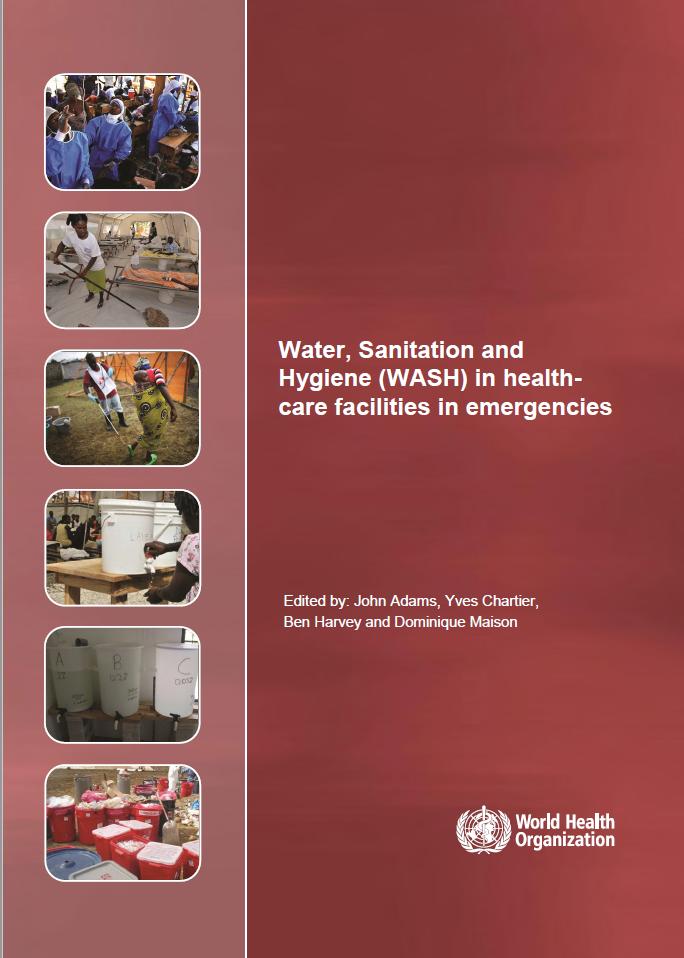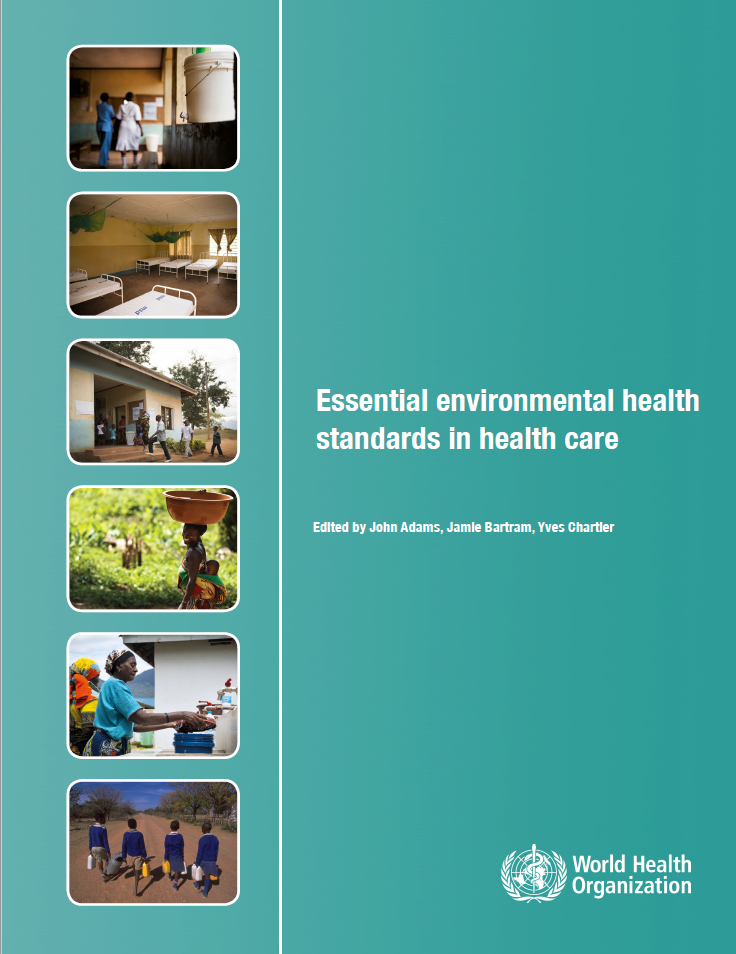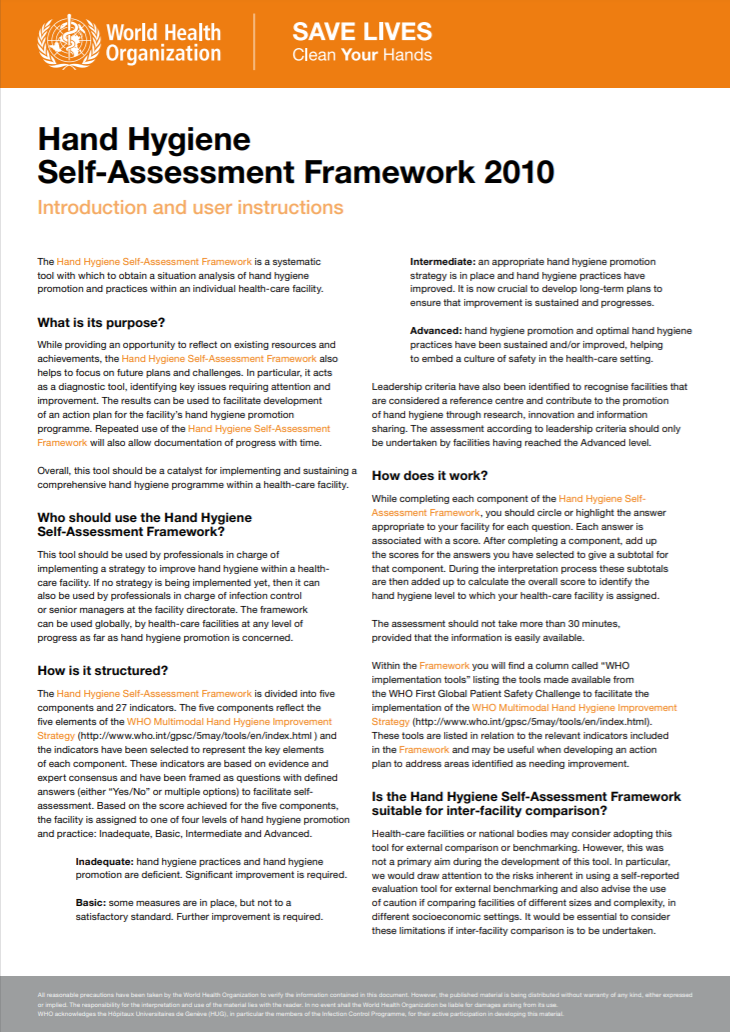This document presents recommended core questions to support harmonised monitoring of WASH in health care facilities as part of the SDGs. The core indicators and questions in this guide were developed by the Global Task Team for Monitoring WASH in HCF, convened by the WHO/UNICEF Joint Monitoring Programme for Water Supply, Sanitation
and Hygiene (JMP), and working under the auspices of the Global Action Plan on WASH in HCF. They are derived from current global normative documents, national standards and regulations, questions that have been used in facility assessment surveys and censuses, and the normative criteria of the human rights to water and sanitation: accessibility, availability, quality and acceptability.
Archives
Core Questions and Indicators for Monitoring WASH in Health Care Facilities (JMP, 2018)

Core Questions and Indicators for Monitoring WASH in Schools (JMP, 2018)

This document presents recommended core questions to support harmonised monitoring of WASH in schools as part of the SDGs. The questions in this guide were agreed upon by the Global Task Team for Monitoring WASH in Schools
in the SDGs, convened by the Joint Monitoring Programme for Water and Sanitation (JMP). They are based on the current global norms, existing national standards, questions in national censuses and multi-national surveys, global WASH in schools monitoring recommendations, and normative human rights criteria: availability, acceptability, accessibility and quality.
- Tags: WASH in Schools. Organisations: UNICEF and UNICEF.
Vector Control: Methods for use by Individuals and Communities (WHO, 1997)

The following document describes a complete description of common disease vectors along their control methods with a focus on low costs settings.
Water and Sanitation for Health Facility Improvement Tool (WHO, 2018)

WASH FIT is a risk-based, continuous improvement framework with a set of tools for undertaking water, sanitation and hygiene (WASH) improvements as part of wider quality improvements in health care facilities. It is aimed at small primary, and in some instances secondary, health care facilities in low and middle income countries. WASH FIT is an adaptation of the water safety plan (WSP) approach, which is recommended in the WHO Guidelines for Drinking-water Quality as the most effective way of ensuring continuous provision of safe drinking-water. It is aimed at small primary, and in some instances secondary, health care facilities in low and middle income countries.
Overview of Technologies for the Treatment of Infectious and Sharp Waste from Health Care Facilities (WHO, 2019)

This document provides an overview of specific health care waste technologies for the treatment of solid infectious and sharp waste. For each technology, details of its operation, effects on the environment and health, requirements for installation, capacities for treating waste, examples of consumables and advantages and disadvantages are described. The document is designed for health care facility administrators and planners, WASH and infection prevention control staff, national planners, donors and partners.
Safe Management of Wastes from Health Care Activities – 2nd Ed (WHO, 2014)

This handbook provides comprehensive guidance on safe, efficient, and environmentally sound methods for the handling and disposal of health-care wastes in normal situations and emergencies.
WASH in Health Care Facilities in Emergencies (WHO, 2011)

This document contains recommendations for setting minimum Water, Sanitation and Hygiene (WASH) standards in health-care facilities in emergencies in order to provide an adequate and safe level of health-care in addition to minimizing the risk of health-care facility related infection for patients, staff and carers.
- Tags: Disease Vector Control and Disease Vector Control. Categories: WASH Guidelines.
Essential Environmental Health Standards in Health Care (WHO, 2008)

This document provides guidance on essential environmental health standards required for health care in medium- and low-resource countries and support the development and implementation of national policies. These guidelines have been written for use by health managers and planners, architects, urban planners, water and sanitation staff, clinical and nursing staff, carers and other health-care providers, and health promoters.
- Tags: Drainage, Drainage, Excreta Management, Excreta Management, Medical Waste Management, Medical Waste Management, Medical Waste Management, Medical Waste Management, Solid Waste Management, Solid Waste Management, WASH in Health Care Facilities, WASH in Health Care Facilities, WASH in Health Care Facilities, WASH in Health Care Facilities, WASH in Health Care Facilities, Water Supply, and Water Supply. Categories: WASH Indicators and Standards, WASH Indicators and Standards, WASH Policy Guidelines, and WASH Policy Guidelines.
Scaling up COVID-19 Outbreak Readiness and Response in Camps and Camp Based Settings

This Interim Guidance addresses specific needs and considerations required in humanitarian situations, including camps and camp-like settings and the surrounding host communities, in scaling-up readiness and response operations for the COVID-19 outbreak through effective multi-sectoral partnership. The Guidance is developed in alignment with the WHO COVID-19 Strategic Preparedness and Response Plan.
Hand Hygiene Self Assessment Checklist for Healthcare Facilities (WHO, 2010)

The Hand Hygiene Self-Assessment Framework is a systematic tool with which to obtain a situation analysis of hand hygiene promotion and practices within an individual health-care facility. The Hand Hygiene Self-Assessment Framework is a systematic tool with which to obtain a situation analysis of hand hygiene promotion and practices within an individual health-care facility.
- Tags: Coronavirus, Coronavirus, COVID-19, COVID-19, Cross Cutting, Cross Cutting, Cross Cutting, Cross Cutting, Handwashing with Soap, Handwashing with Soap, Hygiene Promotion, Hygiene Promotion, Hygiene Promotion, Public Health, Public Health, Public Health, Public Health, Public Health, and Public Health. Languages: English, English, English, English, English, English, English, English, English, and English. Categories: WASH Reference Documents, WASH Reference Documents, WASH Reference Documents, WASH Reference Documents, WASH Reference Documents, WASH Reference Documents, WASH Reference Documents, WASH Reference Documents, WASH Reference Documents, and WASH Reference Documents.
